With the explosion of social media, online ads, and influencer campaigns, it's tempting to focus all our restaurant marketing efforts on the newest trends.
But in doing so, it’s easy to overlook one of the most reliable methods—email marketing!
When done right, email can be a powerhouse for building relationships with diners, boosting table bookings, and turning restaurant visitors into regular diners.
If you're ready to harness the power of email for your restaurant, you've come to the right place.
In this article, we'll dive into seven practical tips to elevate your restaurant's email game.
We'll cover everything from creating irresistible subject lines to tailoring content that keeps your guests coming back for more.
Let’s dive in!
Create a Powerful Welcome Email
Before diving into general email tips, let's talk about one of the most powerful messages you can craft—the welcome email.
This is the type of email sent the moment a guest subscribes to your restaurant's newsletter, giving you an opportunity to form that crucial first connection.
Consider the following fact: welcome emails are practically guaranteed to be seen.
In fact, research shows that they have great open rates.
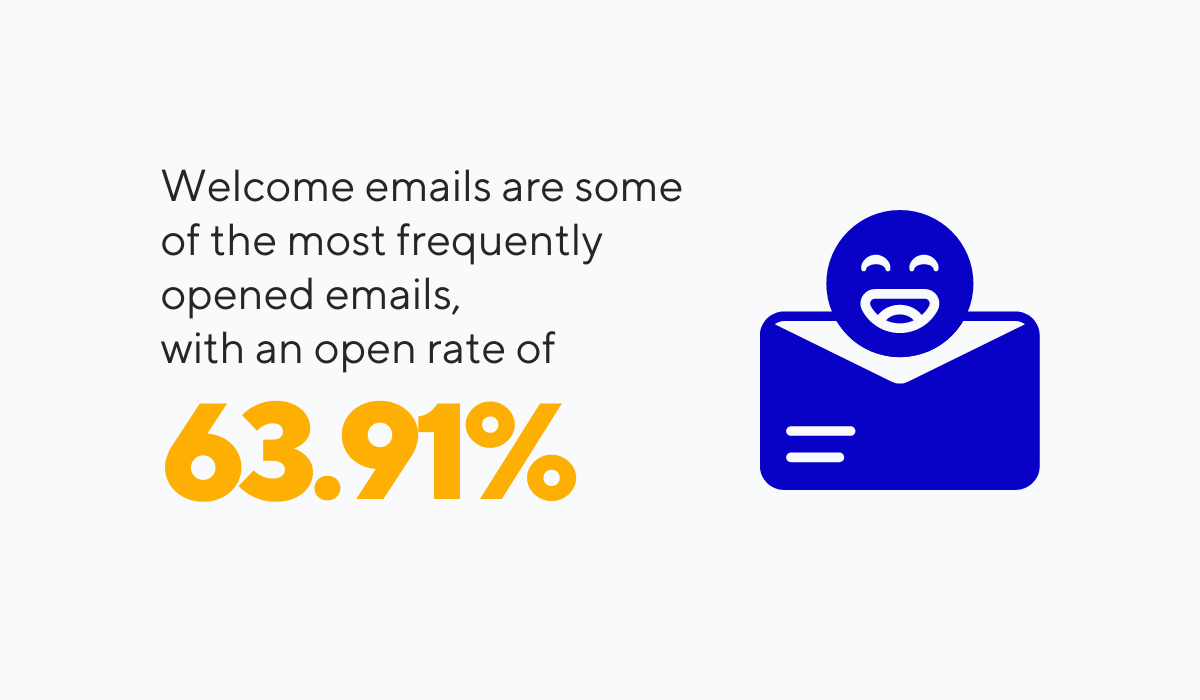
Illustration: Tablein / Data: GetResponse
Because of this fact, welcome emails provide a fantastic opportunity to make a great first impression on your guests by introducing your restaurant and highlighting your offerings, special dishes, or anything that sets you apart from the competition.
Let’s take a look at a good example email from goop Kitchen.
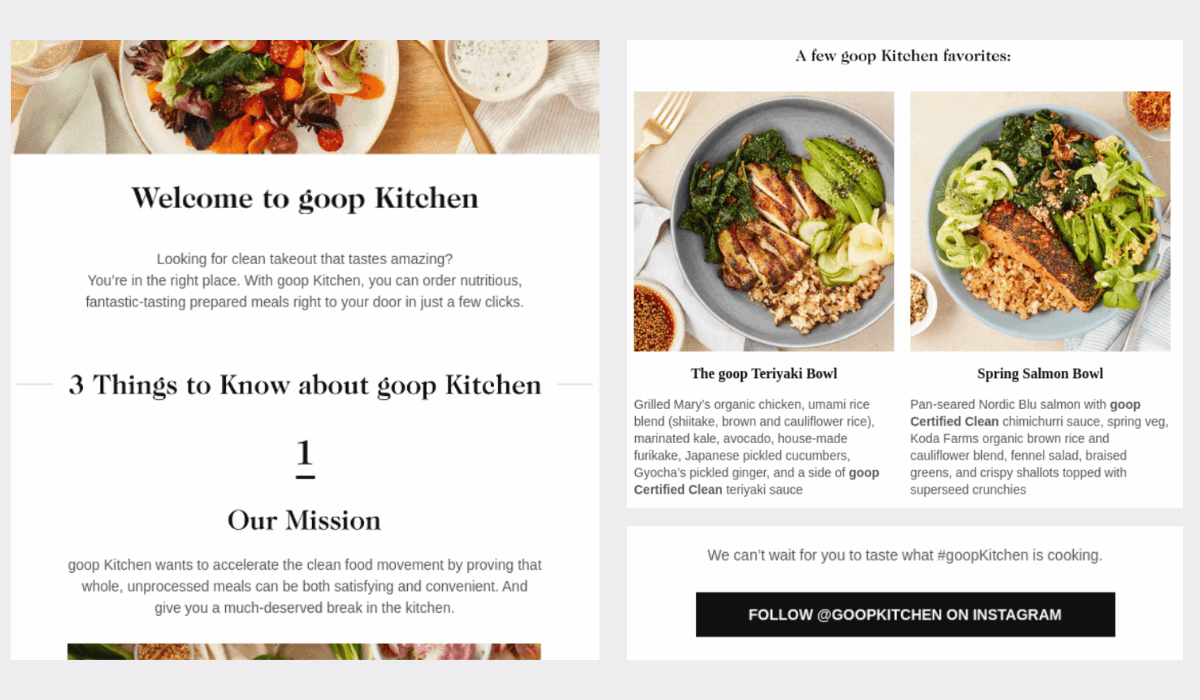
Source: goop Kitchen
This is a clean and concise welcome email that highlights some of the key aspects of goop Kitchen, showcases a few of their popular dishes, and even urges guests to follow their Instagram account with a prominent call to action (CTA) button.
Goop Kitchen does a lot right, but there are a few other dos and don'ts to keep in mind.
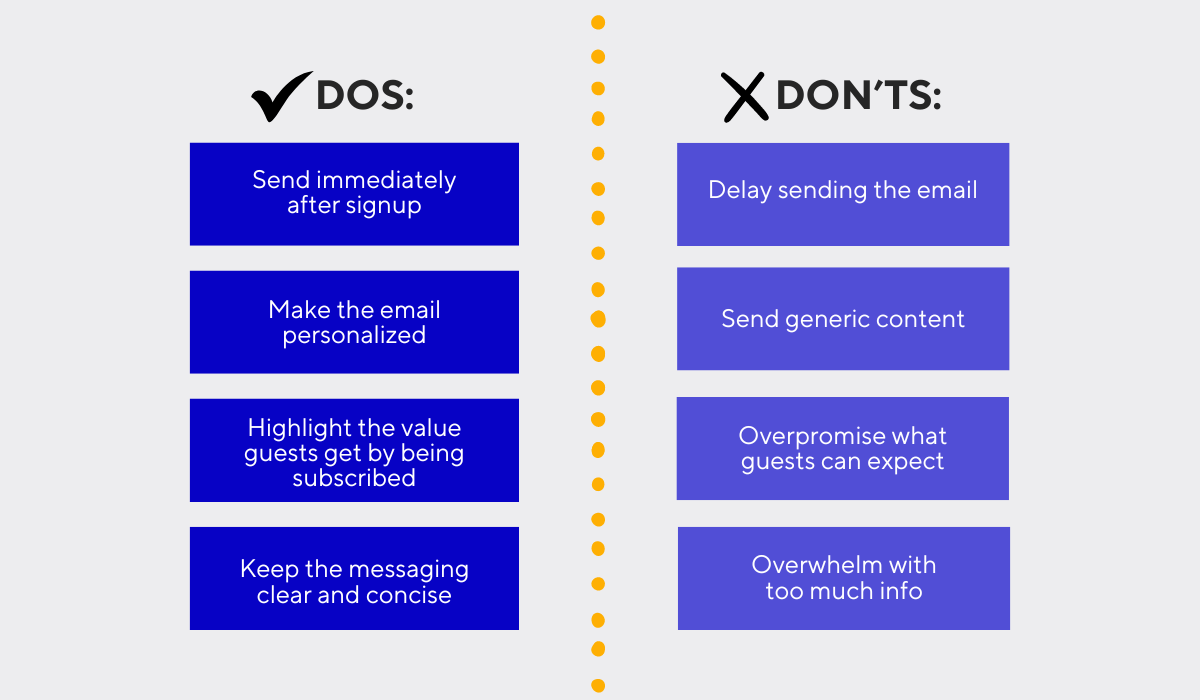
Source: Tablein
In short, send your welcome email immediately after someone signs up to capitalize on their initial interest and, if possible, personalize it by including the guest's name for a friendly touch.
The content itself should highlight what subscribers can expect.
Do you offer exclusive deals, sneak peeks at new dishes, or behind-the-scenes content?
Let them know, but be careful not to overpromise.
By following these guidelines, you'll create a welcome email that leaves new subscribers excited about what's to come.
Send Your Emails at Optimal Times
While you send welcome emails right upon sign-up, your ongoing marketing emails call for a different approach.
You can’t expect emails to be read no matter what time or day they are sent.
After all, nobody will read a restaurant promotional email at 11 pm on a weekend.
Instead, there are some "sweet spots" when your emails are more likely to land in front of your guests' eyes.
Let's take a look at the 2023 HubSpot research on the topic.
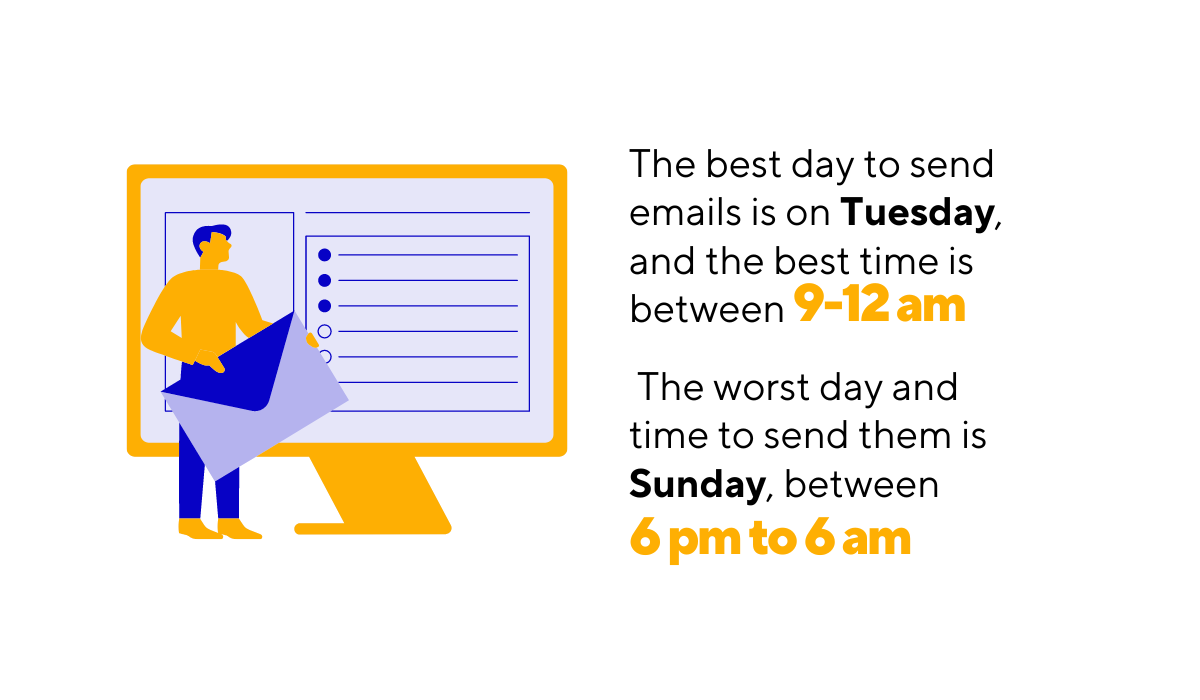
Illustration: Tablein / Data: Hubspot
As you can see, those mid-morning hours during the weekdays tend to be prime time, with Tuesday claiming the crown for the highest open rates.
On the flip side, it's no surprise that weekend evenings are a less-than-ideal time to email subscribers.
However, these are just averages and what works best for your restaurant might be different.
The key is to experiment.
Try sending emails at various times and on different days and carefully track your open rates, click-throughs, and even unsubscribe rates.
You might even want to compare your stats to industry averages like those shown below.
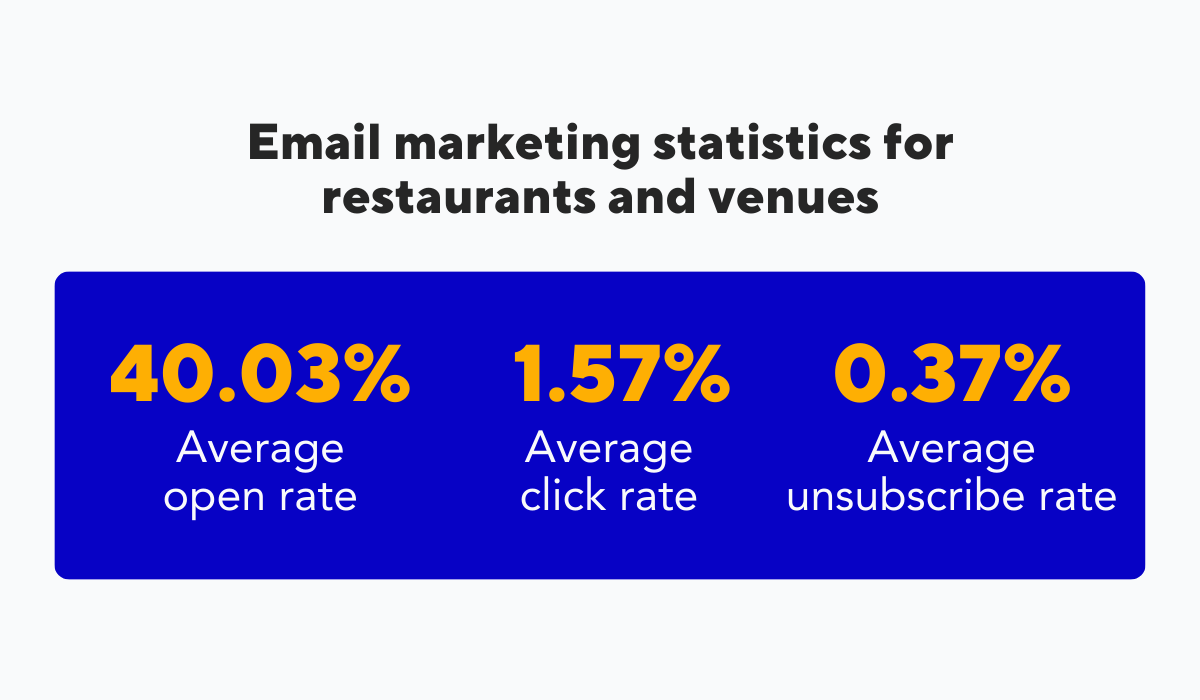
Illustration: Tablein / Data: Mailchimp
If you notice your open rates skyrocket on Wednesdays or your special offers get more action on Sunday afternoons, take note and adjust your marketing strategy accordingly.
But, if early morning emails cause a spike in unsubscribes, that's a red flag to avoid that timing.
So, pay close attention to your own data and what’s generally considered good to get the most out of your marketing efforts.
Make Your Subject Lines Compelling
Let's now dive into the art of writing those all-important subject lines.
Imagine spending hours perfecting your email.
You have a killer design and an irresistible offer, but you finish off with a subject line like "Check out our latest offer NOW!!" Sadly, that email is likely headed straight to the trash, or worse, the spam folder.
While subject lines might seem trivial, they're the first (and sometimes only) thing your guests see when scrolling through their inbox.
So let's explore some best practices you should follow.
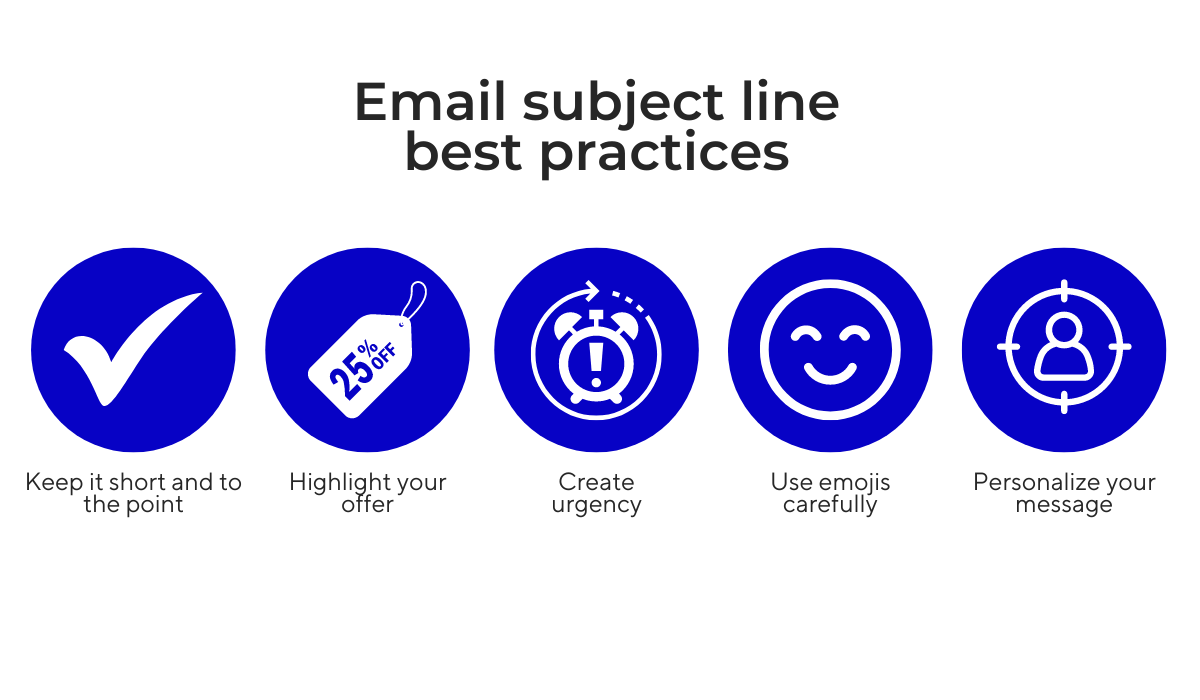
Source: Tablein
First, keep your subject lines short and sweet.
Not only does this ensure that a long sentence isn't cut off on smaller screens, but it also forces guests to focus on the core of what you're offering.
Next, make sure you highlight the purpose of the email and, when appropriate, use phrases like "Limited time offer" or "Tonight only" to add a sense of urgency.
Add the guest name as well and you make the email all the more prominent.
Now, concerning emojis—some marketers avoid them, others swear by them.
If you’re a fan of emojis, use just a few well-placed ones to make your email pop in a crowded inbox.
Check out the following example.
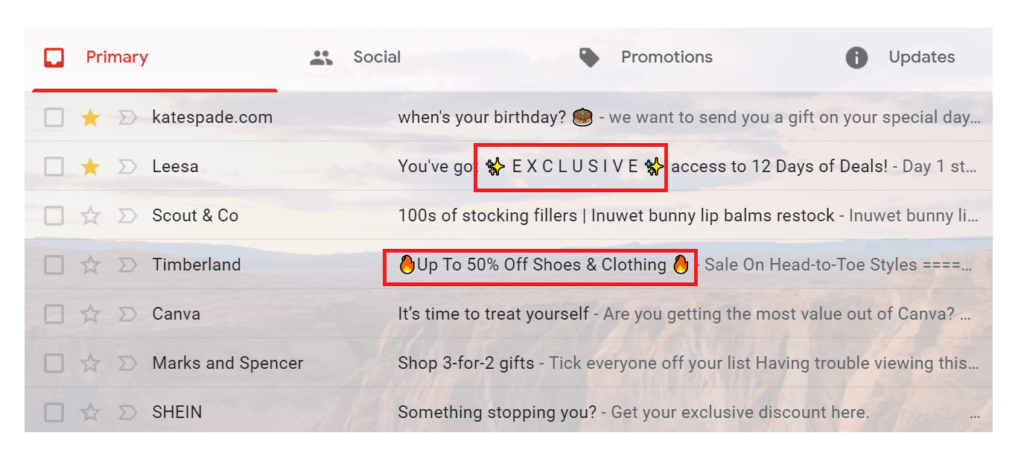
Source: Moosend
While the eye is drawn to the subject lines that use emojis, be careful not to go overboard, or you'll risk looking spammy instead of eye-catching.
Overall, mastering the art of engaging subject lines can transform inboxes into a gateway for attracting guests.
Include Eye-Catching Visuals
One of the easiest ways to supercharge your emails is by incorporating eye-catching images and graphics.
As a restaurant, you have an incredibly valuable asset when it comes to visuals—delicious-looking food!
Food photos are a natural fit for restaurant emails.
They can highlight your most popular dishes, tempting diners to try something new.
And if those photos make your guests' mouths water, the chances of them booking a table or ordering online increase dramatically.
If you choose to go the DIY photo route, prioritize good lighting, clean compositions, and basic food styling.
When in doubt, a skilled food photographer can create images worthy of your best dishes.
Let’s now check out some examples, starting with the one from Marion Wine Bar.
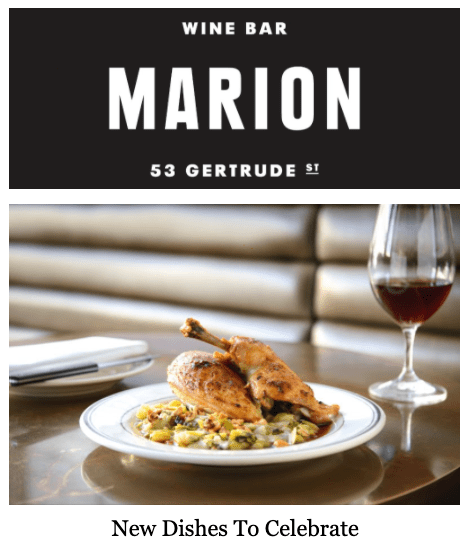
Source: Marion
Just an appetizing image of a chicken dish, taken at one of the restaurant tables.
It might not be over the top or creative, but coupled with a tempting discount or a special offer, this email can be a recipe for capturing clicks from hungry guests.
You can also go the video route, as seen in the example below.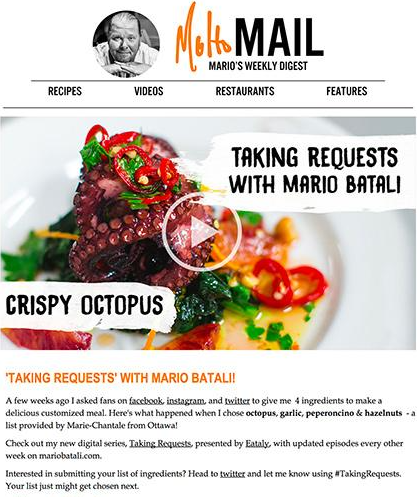
Source: MyEmma
Of course, food photos aren't the be-all and end-all of great email visuals.
It's also worth considering your email fonts, colors, and overall email design, but that’s a topic for another article.
By creating a cohesive, visually appealing package, you'll transform your emails into something your guests truly look forward to receiving.
Offer Exclusive Promotions
While a drool-worthy photo might be tempting, sometimes a little extra incentive is just what it takes to get guests through the door.
By offering special deals and promotions reserved for your email subscribers, you give them a tangible reason to sign up and stay subscribed.
Plus, it can show your regulars how much you appreciate their loyalty.
Let's take a look at a few offers you could feature.
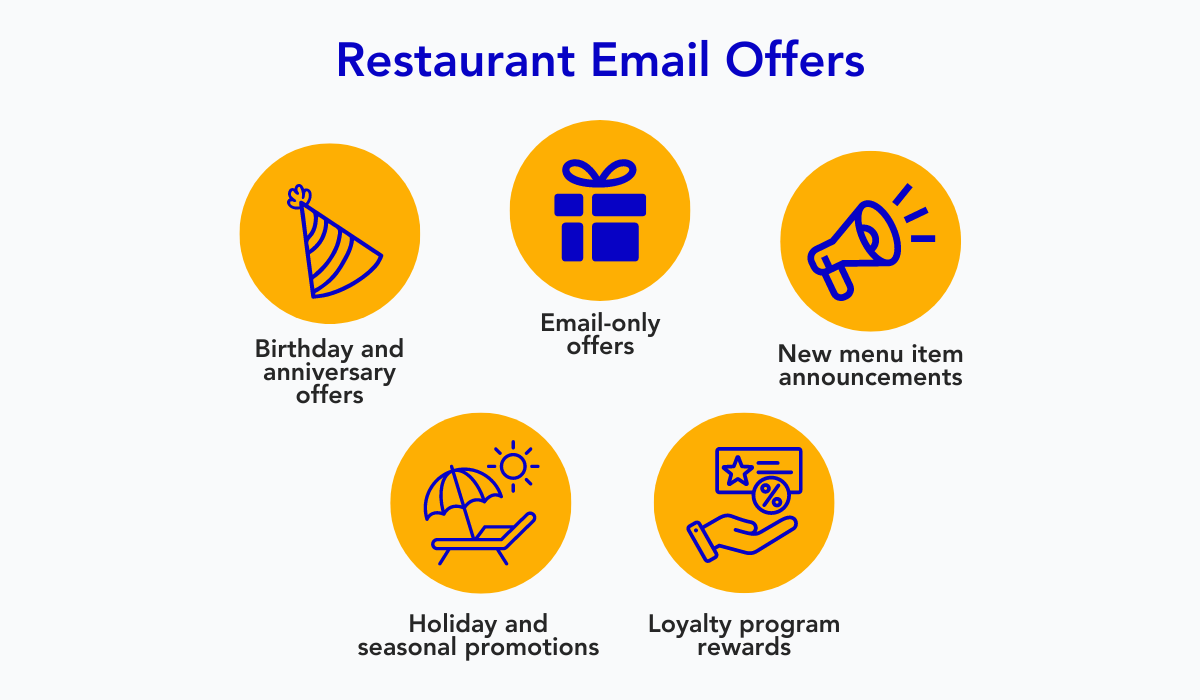
Source: Tablein
Birthdays are the perfect excuse to treat your guests, as a great offer on this special day can really strengthen that personal connection.
Another idea is exclusive email-only promotions.
You can include a special code for online ordering or in-restaurant dining—your subscribers will feel like VIPs.
Speaking of VIPs, consider loyalty program rewards, sneak peeks at new menu items, or seasonal specials announced solely via email.
But that’s just scratching the surface.
Notice a regular guest hasn't visited in a while? Try a "We miss you!" email like Pinkberry did.
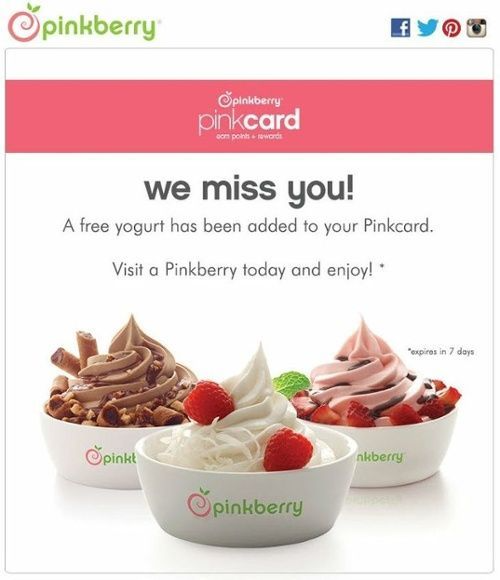
Source: Pinkberry
As a final note, you should aim to motivate those who haven't signed up yet.
A valuable gift in exchange for a newsletter subscription is a powerful tool.
Primavera Kitchen does it with a free e-cookbook, as seen below.
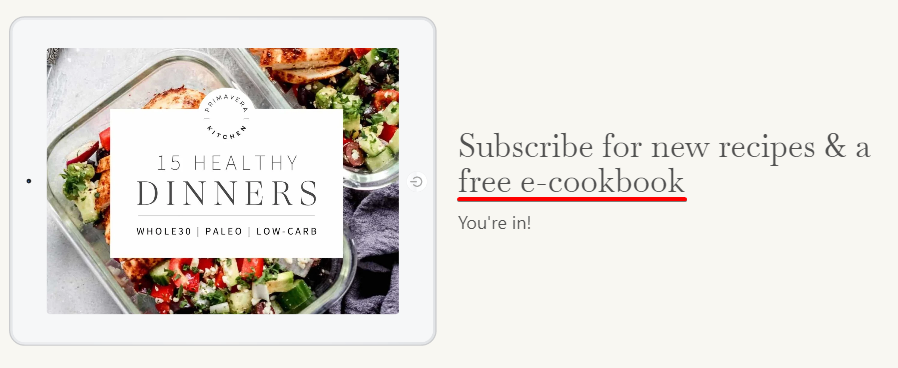
Source: Primavera Kitchen
Follow their example and offer exclusive recipes, a discount for first visits, or even a free appetizer or drink.
All in all, by sweetening the deal with great offers, you'll transform those newsletter signups into happy, hungry customers.
Include Clear Calls to Action in Each Email
Every email needs a clear direction!
After all, the goal is to get your guests to do something, whether that's booking a table, ordering takeout, or following your social media.
That's where the call-to-action (CTA) button comes in.
Let's start with a great example.
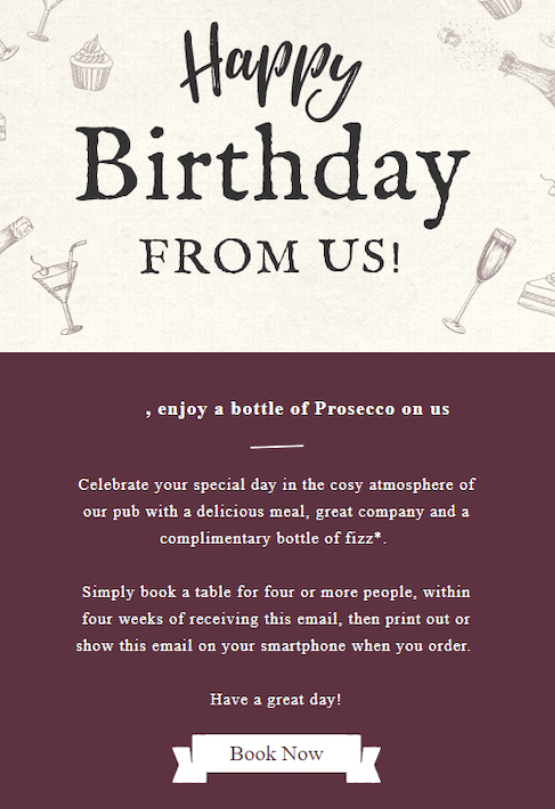
Source: The Cowherds
See that big, bold "Book Now" button in The Cowherds' birthday email?
If a guest is tempted by the free drink offer, there's a clear path for them to take immediate action.
You might think CTAs are a no-brainer, but often they're underused, poorly designed, or just plain hard to find in the clutter of an email.
Here are a few best practices to ensure your buttons get those clicks:
- Make the buttons stand out through color and size
- Use action-oriented language and be direct
- Keep it simple: one clear action per email is ideal
- Make sure the CTA button looks good on mobile screens
Let's see how following (or ignoring!) these tips plays out, with a hypothetical example illustrated below.
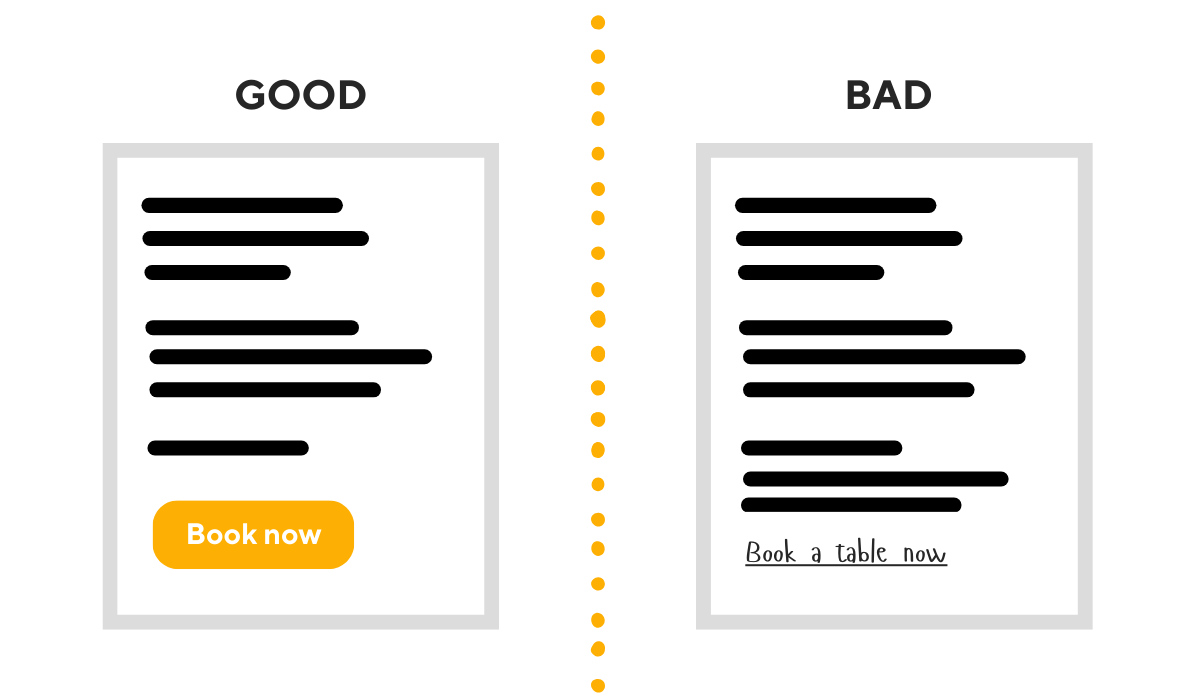
Source: Tablein
See the difference? On the left, we have a big, eye-catching button.
On the right, the CTA is lost in a sea of text and rendered nearly illegible by a fancy font and poor color contrast.
So aim for crafting clear, compelling CTA buttons to guide your guests toward the actions you want them to take.
Segment Your Audience
For our final tip, we're circling back to one of our first discussions—the importance of personalization.
After all, your email subscribers are diverse. They have different tastes, dining habits, and interests.
By segmenting your email list into smaller groups based on these characteristics, you can send highly relevant emails that are more likely to resonate with each individual.
Some common segmentation categories include:
- Demographics: Age, gender, location, etc.
- Psychographics: Interests, values
- Behavior: Purchase history, website activity, email engagement
But, as a restaurant, you have additional valuable data at your disposal that you might want to segment guests by.
Check out a few examples illustrated below.
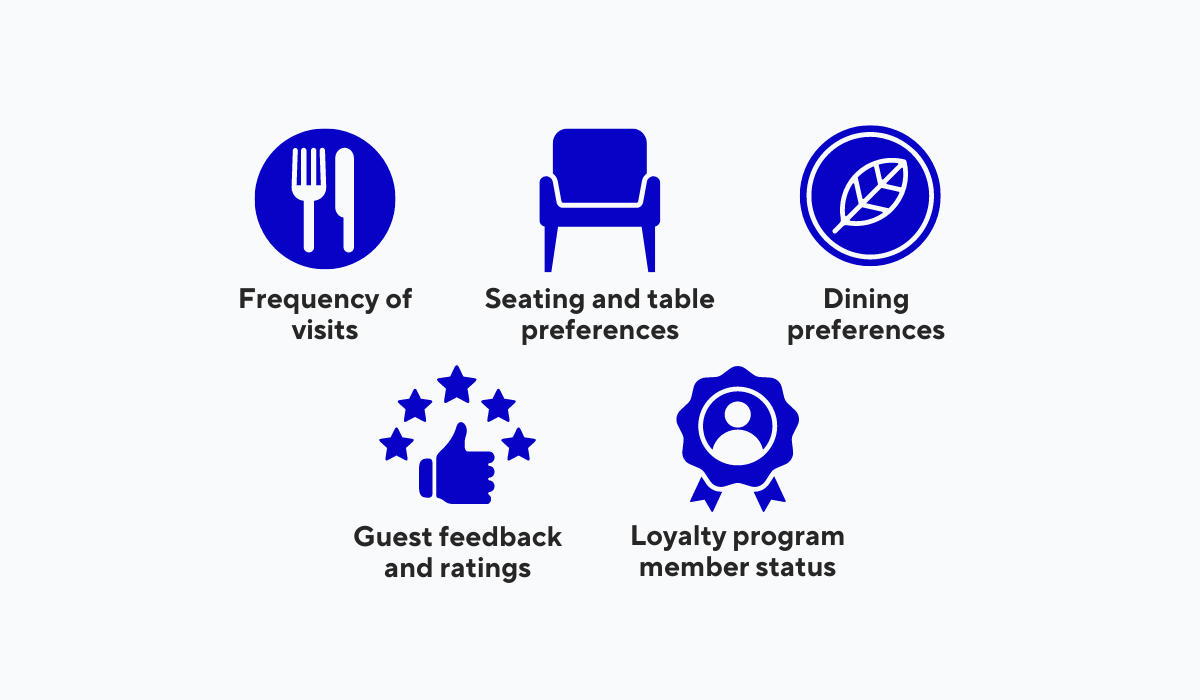
Source: Tablein
Wouldn't it be great to reward your most loyal customers with an exclusive perk, or to entice less-frequent visitors with a special offer?
And for a guest who's mentioned a vegan diet, promoting your latest steak special would be a major marketing misstep.
The tricky part is that most general-purpose email marketing platforms don't cater to these restaurant-specific factors, and you’d have to do everything manually.
That's where a specialized reservation system like Tablein comes in.
As part of our extensive feature list, we offer reservation management options coupled with a robust guest database.
This allows you to collect crucial customer data like dietary preferences, visit frequency, ratings, and even custom tags for VIPs, dietary restrictions, and more.
Best of all, Tablein integrates with popular email marketing platforms like MailerLite and Mailchimp.
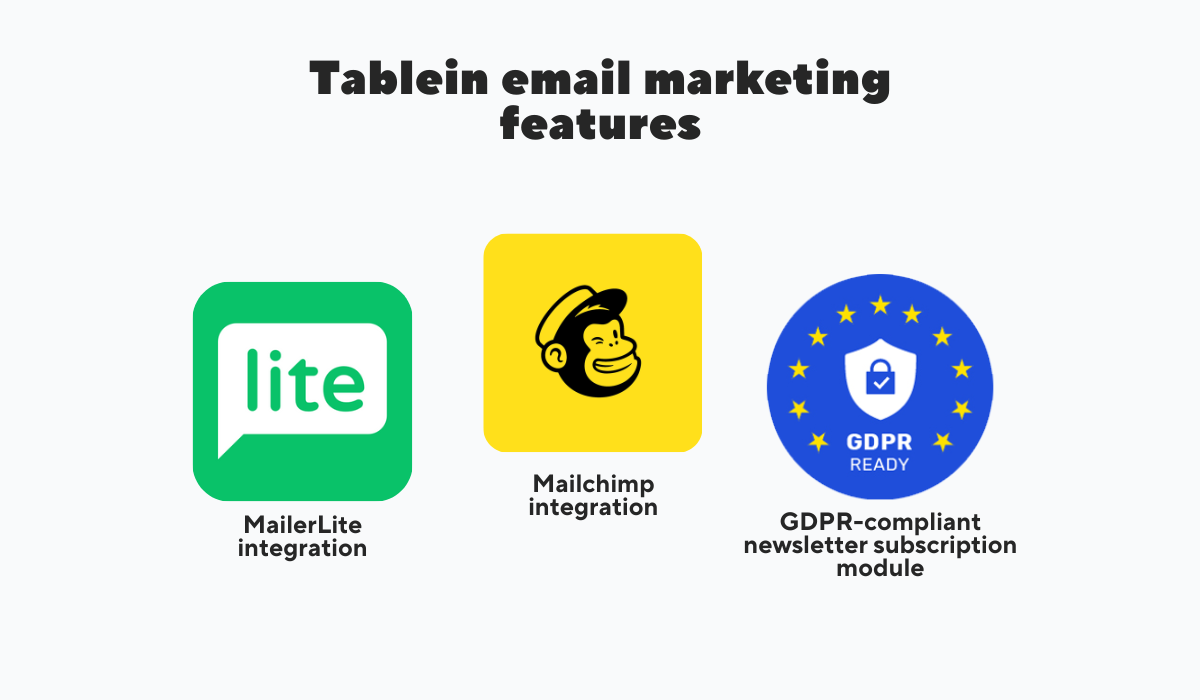
Source: Tablein
With these integrations, you can seamlessly add guest emails directly to your chosen platform and create those targeted segments.
For example, you can create a list with everyone who's given you a stellar 8+ star review— a group ready for a special thank-you email!
Finally, our GDPR-compliant newsletter subscription module ensures you safely and legally grow your email list, giving you even more opportunities to personalize your outreach.
Ultimately, by embracing audience segmentation, you transform your email campaigns into laser-focused tools for building customer loyalty and filling your tables.
Conclusion
And that's a wrap on our email marketing tips.
We've explored everything from ways to spice up your subject lines, make your emails visually appealing, and craft compelling offers, to how you can segment your audience for those personalized touches that make your regulars feel special.
The best part?
You can start implementing these tips right away and see how they impact your restaurant's reach and engagement.
You don’t have to use all of our tips all at once.
Consistency is vital, and with regular, well-crafted emails, you'll keep your restaurant at the forefront of your guests' minds, and have them eagerly booking their next table with you.
Get a 30-day Exclusive Trial
As a Tablein blog reader, you’re eligible for an exclusive 30-day free trial to experience our simple reservation solution for your restaurant.
Enter your business email, and we’ll send you all the steps needed to create your account.
Share this
You may also like
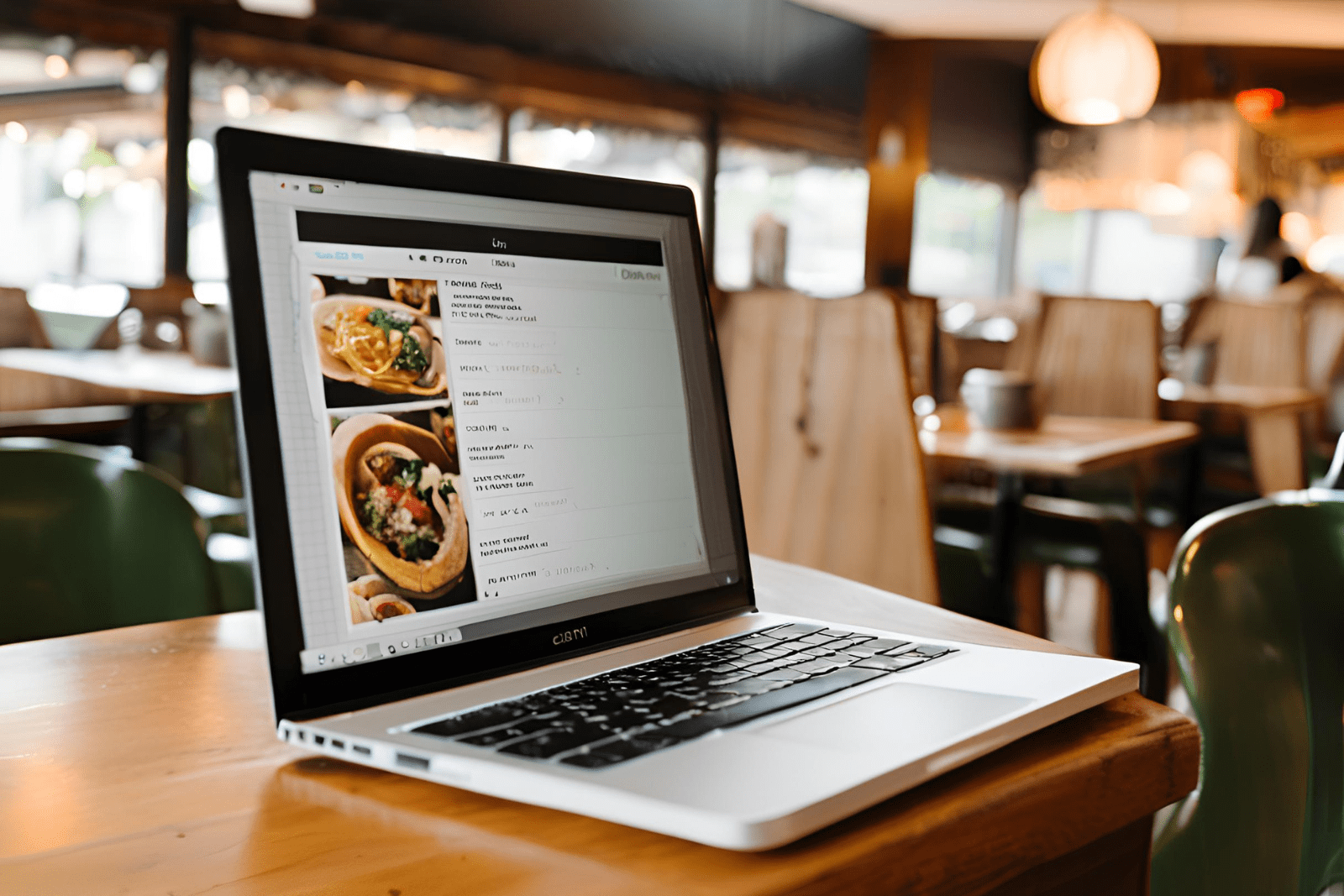
7 Inspiring Examples of Email Marketing for Restaurants

5 Email Marketing Mistakes Your Restaurant Should Avoid
